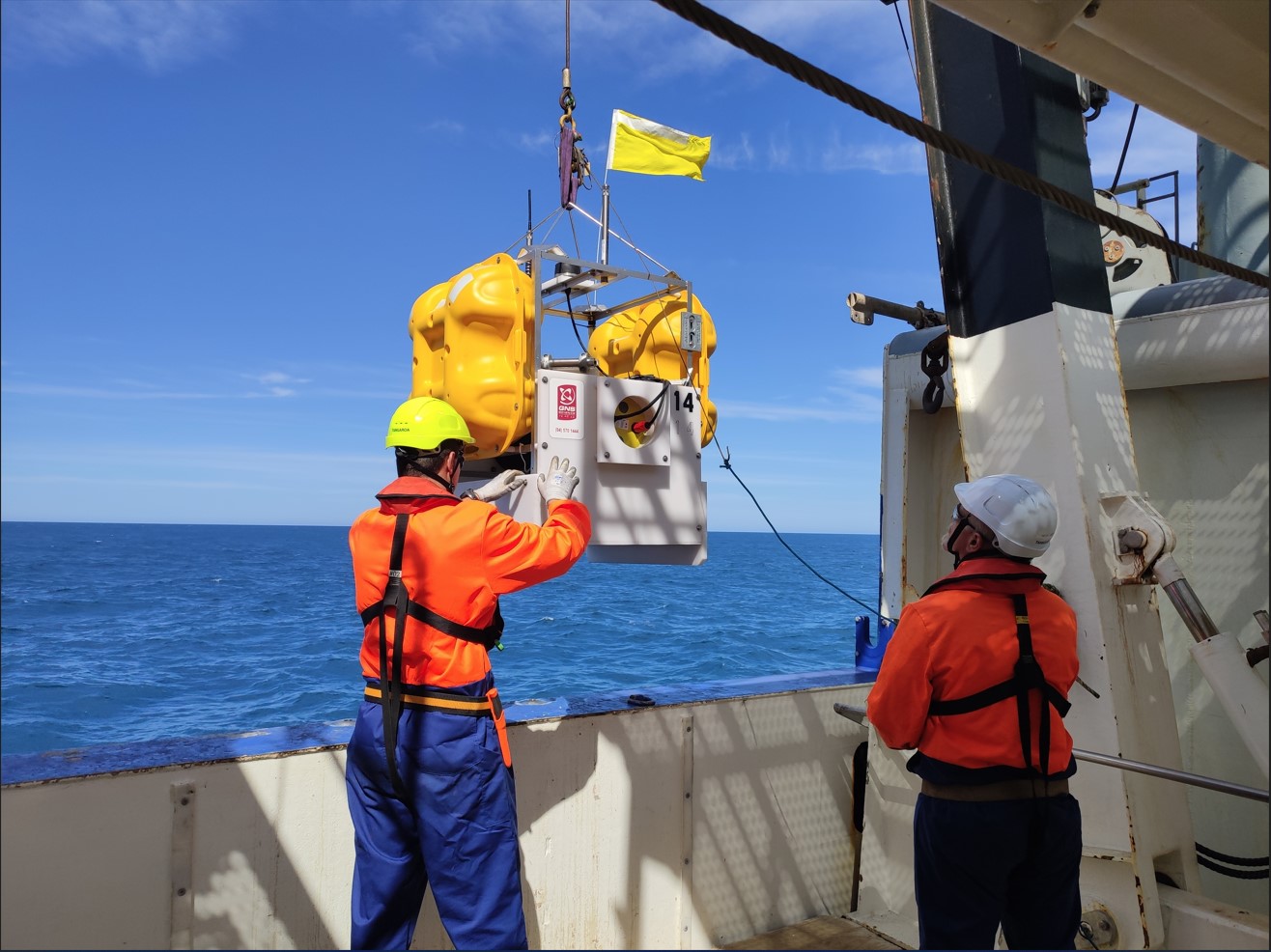
Scientists begin search for evidence of climate influence on volcanoes and earthquakes

Scientists have begun studying a 500-metre long sediment core, retrieved from the Hikurangi Subduction Zone, Aotearoa New Zealand’s largest and most active fault.
PhD student Anthony Shorrock joins a large team of international scientists, led by Dr Lorna Strachan from University of Auckland, investigating whether long-term sea-level rise associated with climate change, impacts the frequency of volcanic eruptions and earthquakes.
Sediment cores are taken by drilling down into the sea floor and are a layered record of all the land and volcanic debris that has been deposited. Scientists study these cores for signs of abrupt changes in the layers, which indicates if an earthquake or volcanic eruption occurred.
This core is the longest ever recovered from the Hikurangi Subduction Zone and represents the last 800,000 years, making it one of Aotearoa New Zealand’s longest records of earthquake history.
“This is the first chance we’ve had to look at these longer timescales and look at how the environment has changed, which helps improve our broader knowledge of the margin” says Shorrock.
Shorrock is the first PhD student to join a collaborative team of researchers looking at different markers of environmental change, volcanism and earthquakes, to build a better picture of how sea level change has impacted that activity over the last 800,000 years.
Scientists have previously proposed that there is a link between sea level rise and increases in the frequency of earthquakes and volcanic eruptions, but this project will be the first time that this hypothesis has been tested.
Shorrock’s previous Masters project looked at the first 100-metres of this core, studying the processes that occurred over the last 42,000 years which saw three alternating periods of warm and cold climates. This laid the groundwork for his PhD project which looks at the next 400-metres.
The core contains evidence of hundreds of earthquakes and volcanic eruptions. By comparing the frequency of these events in periods of warm climate to this during periods of cool climate, scientists can better understand how climate impacts this activity.
“Learning more about how our environment responds to a changing climate and sea level rise allows us to understand how these hazards might impact us in the future, and how we might better prepare.”
This Marsden funded project began in March 2021 and will span three years, involving scientists from NZ, UK, USA, Portugal, Netherlands, Germany, and Australia.
https://www.eastcoastlab.org.nz/our-science/our-projects/does-climate-change-influence-the-frequency-of-earthquakes-and-volcanic-eruptions
10 February 2023
Disclaimers and Copyright
While every endeavour has been taken by the East Coast Lab Hikurangi Subduction Zone M9 to ensure that the information on this website is
accurate and up to date, East Coast Lab Hikurangi Subduction Zone M9 shall not be liable for any loss suffered through the use, directly or indirectly, of information on this website. Information contained has been assembled in good faith.
Some of the information available in this site is from the New Zealand Public domain and supplied by relevant
government agencies. East Coast Lab Hikurangi Subduction Zone M9 cannot accept any liability for its accuracy or content.
Portions of the information and material on this site, including data, pages, documents, online
graphics and images are protected by copyright, unless specifically notified to the contrary. Externally sourced
information or material is copyright to the respective provider.
© East Coast Lab Hikurangi Subduction Zone M9 - www.eastcoastlab.org.nz / +64 6 835 9200 / info@eastcoastlab.org.nz
